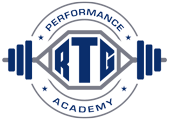The Effect of Hip Strength on Ankle and Knee Health
Ankles and knees account for two of the most common locations for injury to occur in the human body. While there may be a variety of reasons for each of these injuries, let’s look at how we can recover from injury as well as prevent injury altogether.
Ankle sprains account for the most common injury amongst athletes. On top of that, the likelihood of additional sprains goes up significantly for those with a history of ankle injuries. Many people develop what is referred to as a chronic ankle sprain. This refers to severe instability in the ankle, and chronic pain throughout the joint. Research has evaluated groups with chronic and acute ankle sprains to determine common characteristics within the body. The hope is to determine potential causes and effective treatment and prevention protocol. In these studies, one common thread shows that people with acute or chronic ankle sprains have either significant weakness, or motor control dysfunction in their hip abductors, external rotators and/or extensors.(2,3,4) The two primary muscles that achieve these motions are the gluteus maximus and the gluteus medius. These hip muscles help us stabilize the joints up and down the chain of the body and allow us to move with good mechanics. (7) Physical therapists use various exercises to train these muscles along with the gluteus minimus to treat ankle sprains. This begs the question, do ankles get injured due to weak hips, or do weak hips develop as a result of sprained ankles. One thing can be sure, having strong hips will only help protect the ankle joint, so it only makes sense to train the hip muscles.
Knee injuries are next in line with many people developing some sort of knee issue throughout their life. One common reason that pain or injury occurs is due to biomechanical issues where one or more of the moving pieces in knee flexion or extension isn’t functioning properly. Studies have shown strong links between knee pain and weak hip abductors and external rotators. (1,5,8) The hip plays a major role in the movement of the knee as it helps keep the knee into proper alignment. One tendency that someone with weak hips may experience is knee valgus. (the knee falls in towards the mid-line of the body). The Q angle, (angle from the outside of the hip, to the inside of the knee) allows for a good predictive tool for the occurrence of knee injury or pain. The larger the Q angle, the more shear force is applied to the knee joint. Women tend to have larger Q angles than men due to generally wider hips explaining their higher rate of knee injuries than men. This makes it especially important for women to have strong hip abductors and external rotators to pull the knee into a good movement pattern. Across a large body of research, findings consistently point to an improvement in the condition of the knee following hip strengthening protocol. (6)
How we move plays a large role in the wear and tear on our bodies. For athletes who train daily and push themselves to their limit, it is important that those hard trainings are done with excellent movement mechanics because without those, the wear and tear is amplified! The incidence of injury for athletes with poor mechanics is significantly greater than those with good mechanics.
So, what are some signs that you may have weak hips? When you do lower body exercises, do your knee(s) fall in towards the middle of your body? When standing on one leg, do you tend to twist your knee across when bending your knee in order to help with balance? These are just a few signs that it may be time for you to add hip work to your training plan!
About the author:

Trevor Wiltz MS, PES, Pn1
Trevor is a Strength and Conditioning coach at RTG Performance Academy and Adjunct Professor of Kinesiology at Dallas Baptist University.
References
- Barton C. J., Lack S., Malliaras P. (2013). Gluteal muscle activity and patellofemoral pain syndrome: a systematic review. British Journal of Sports Medicine: 47:207-214.
- DeJong, A. F., Koldenhoven, R. M., Hart, J. M., & Hertel, J. (2020). Gluteus medius dysfunction in females with chronic ankle instability is consistent at different walking speeds. Clinical biomechanics (Bristol, Avon), 73, 140–148.
- De Ridder, R., Witvrouw, E., Dolphens, M., Roosen, P., & Van Ginckel, A. (2017). Hip Strength as an Intrinsic Risk Factor for Lateral Ankle Sprains in Youth Soccer Players: A 3-Season Prospective Study. The American journal of sports medicine, 45(2), 410–416. https://doi.org/10.1177/0363546516672650
- Friel, K., McLean, N., Myers, C., & Caceres, M. (2006). Ipsilateral hip abductor weakness after an inversion ankle sprain. Journal of athletic training, 41(1), 74–78.
- Ireland, M. J., Wilson, J. D., Ballantyne, B. T., Davis, I. M (2003). Hip Strength in Females With and Without Patellofemoral Pain. Journal of Orthopaedic & Sports Physical Therapy: Vol 33:11 671-676. https://www.jospt.org/doi/10.2519/jospt.2003.33.11.671
- Kim E. K. (2016). The effect of gluteus medius strengthening on the knee joint function score and pain in meniscal surgery patients. Journal of physical therapy science, 28(10), 2751–2753. https://doi.org/10.1589/jpts.28.2751
- MacKinnon, C. D., & Winter, D. A. (1993). Control of whole-body balance in the frontal plane during human walking. Journal of biomechanics, 26(6), 633–644. https://doi.org/10.1016/0021-9290(93)90027-c
- Rowe, J., Shafer, L., Kelley, K., West, N., Dunning, T., Smith, R., & Mattson, D. J. (2007). Hip strength and knee pain in females. North American Journal of sports physical therapy: NAJSPT, 2(3), 164–169.


Leave a Reply
Want to join the discussion?Feel free to contribute!